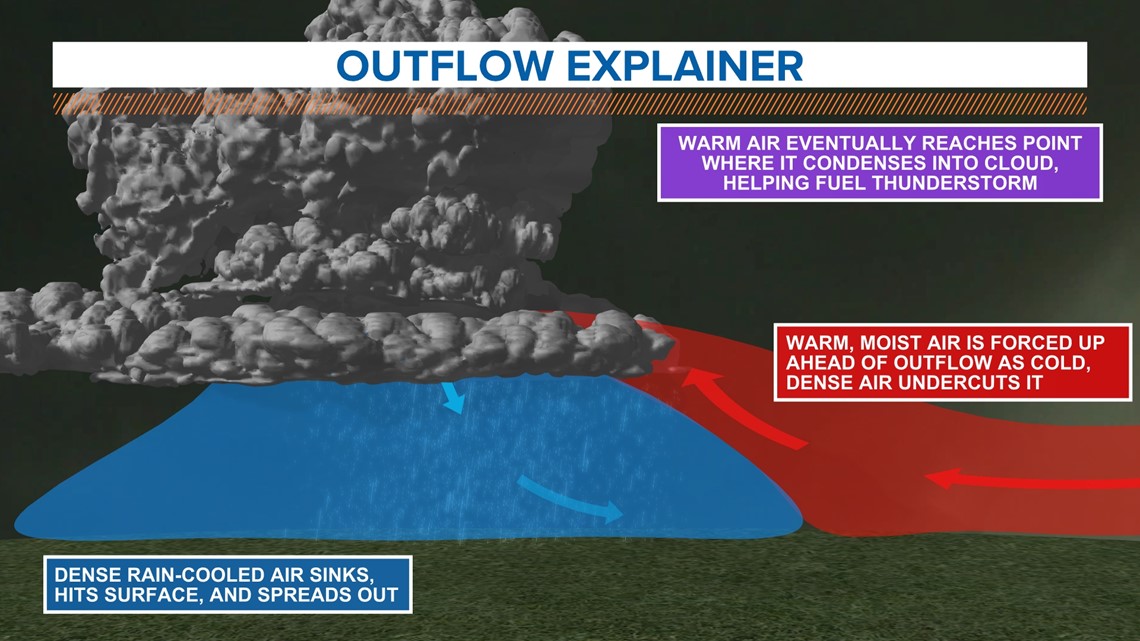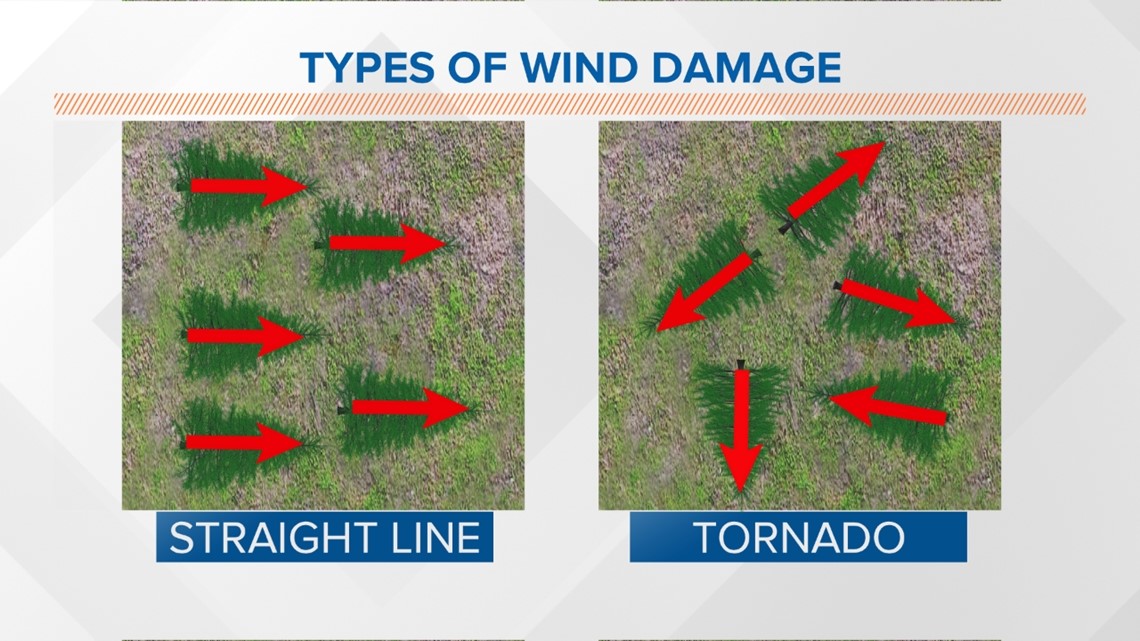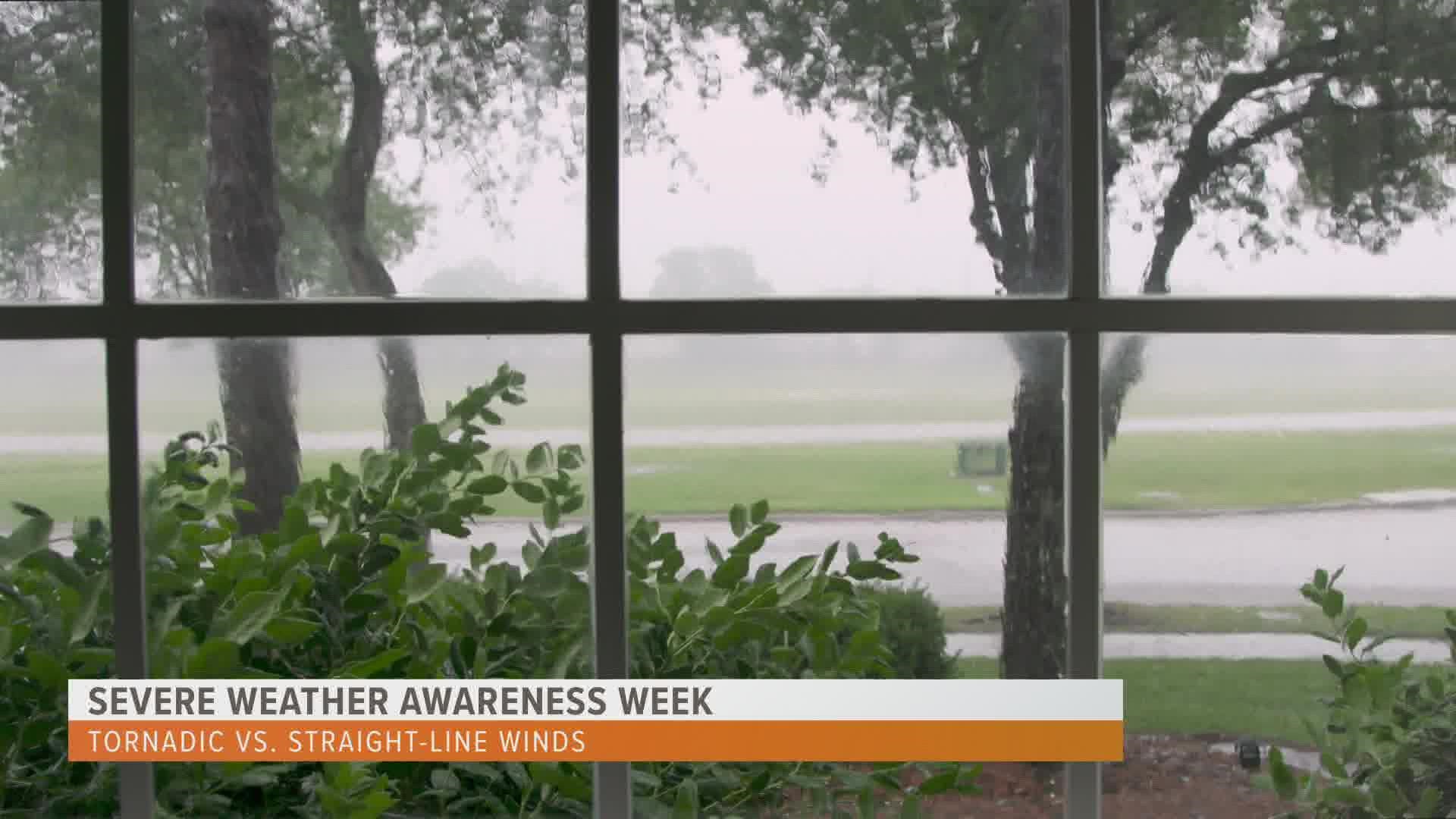GRAND RAPIDS, Mich. — We’re not a stranger to thunderstorms here in West Michigan. A common mindset is if there’s no tornado it is not a big deal. Just because a storm is ruled ‘non-tornadic,’ it does not mean the impacts are not as significant. With the right ingredients -- they can be just as dangerous as a tornado.
Tornadic and straight-line are individual types of wind, but equally important to understand. However, both are confused for one another. So what’s the difference between the two?
Tornadic winds rotate or spin in a narrow column of air from the base of a thunderstorm to the ground. The impacts usually cover smaller distances but can cause a wide range of damage.
Straight-line winds are any thunderstorm wind not associated with rotation. Caused from the strong downdraft in a thunderstorm, these winds blow parallel to the ground and can cover large distances such as Derechos and squall lines or cover short distances like a microburst.


Most straight-line wind events produce winds of 60 mph but can be upwards of 100+ mph. Plenty to snap off limbs, cause damage to your home, and bring down power lines.
In fact, non-tornadic wind damage reports outnumbered tornadic reports 449 to 17 in Michigan last year.


But how is this determination made?
It primarily falls in the direction of the damage.


If damaged objects fell in one direction or in a parallel path, it’s likely due to straight-line winds. If the damaged objects fell in various directions, tornadic winds become a likelier culprit because of their rotational component.
Regardless of a storm bringing tornadic or straight-line winds, both cause damage and need to be taken seriously. 60+ mph winds will do almost the same amount of damage, no matter if they come from a tornado or a downburst.
Being informed, alert, and utilizing a severe weather plan is the best course of action.
►Make it easy to keep up to date with more stories like this. Download the 13 ON YOUR SIDE app now.
Have a news tip? Email news@13onyourside.com, visit our Facebook page or Twitter. Subscribe to our YouTube channel.

